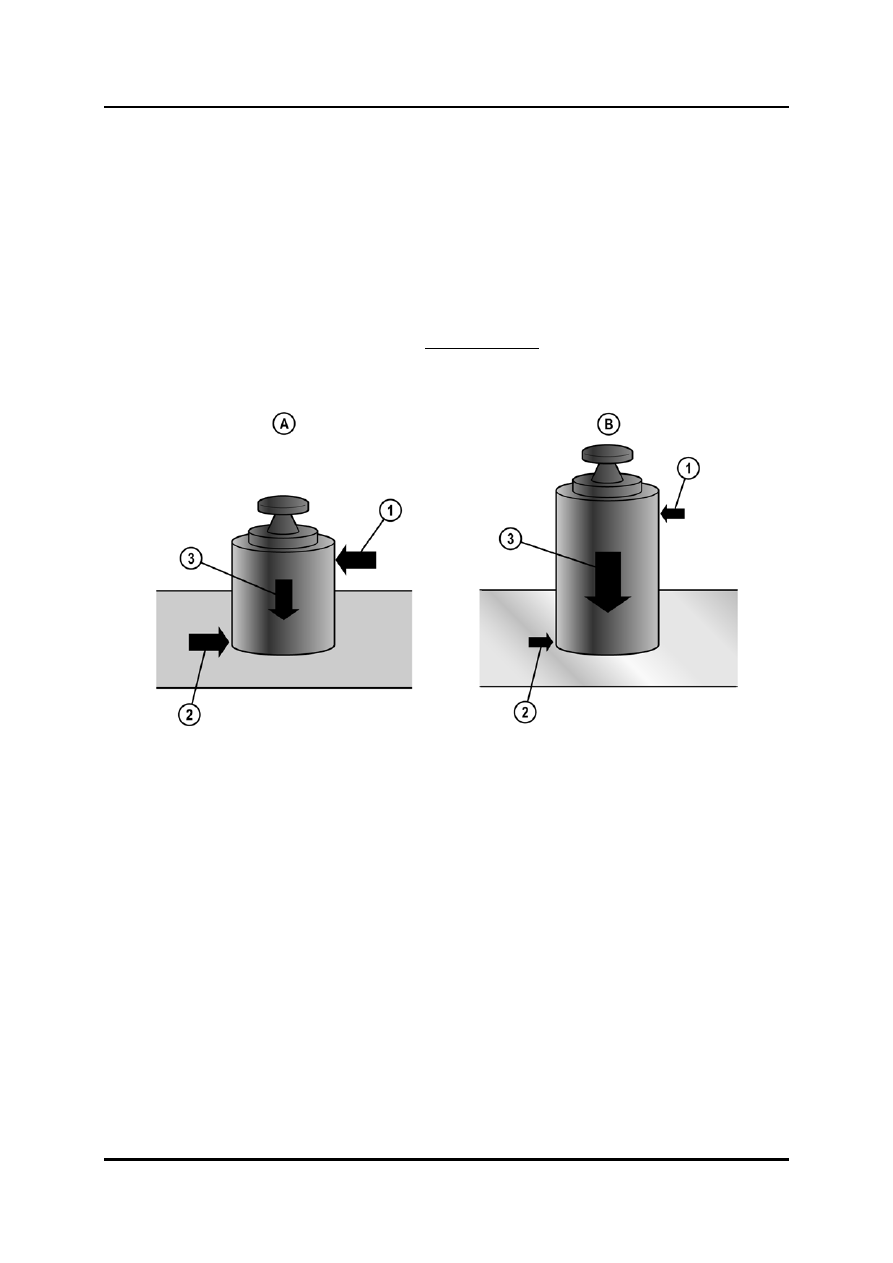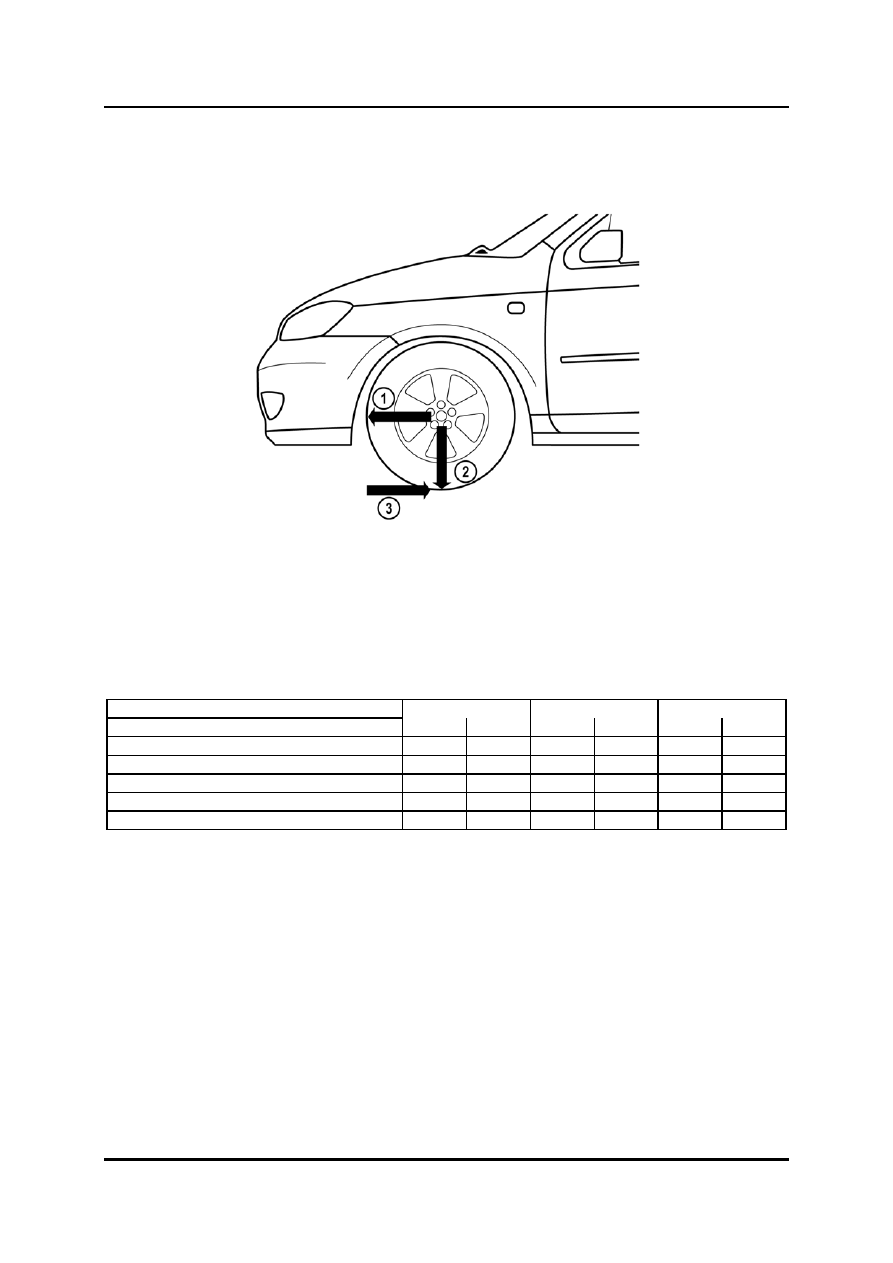Mazda Training manual — part 81
Dynamic Driving Safety Systems
Fundamentals
Yaw Moment
•
The yaw moment around the vehicle’s vertical axis is caused by different longitudinal
forces acting on the left and right side of the vehicle, or different lateral forces acting at
the front and rear axles. Yaw moments are required to turn the vehicle when cornering.
Undesired yaw moments can occur when a vehicle rotates too strongly around the yaw
axis.
Longitudinal Force
•
During driving, accelerating, decelerating, and braking, the longitudinal force acts in the
driving direction of the vehicle.
Lateral Force
•
The lateral force, that is applied to the vehicle by wind and cornering, acts sideways on
the vehicle.
Vertical Force
•
The vertical force is the weight that is transmitted vertically by a tire. It depends on the
vehicle’s gross weight, the vehicle’s centre of gravity, and other dynamic influences.
Curriculum Training
01-3

Fundamentals
Dynamic Driving Safety Systems
Coefficient of Friction
•
The frictional force is additionally affected by the coefficient of friction, which differs
according to the materials and the surfaces rubbing against each other.
•
The illustration shows that less force is necessary to push the larger weight across iced
tarmac. It can be easily seen that the force required is much less than the vertical force
due to the object’s gross weight.
•
The relationship between the frictional force and the vertical force is the coefficient of
friction μ:
Frictional force
μ=
Vertical force
L2003_01004
A Small weight on tarmac
2 Frictional force
B Heavy weight on iced tarmac
3 Vertical force
1 Necessary force to push the object
01-4 Curriculum
Training

Dynamic Driving Safety Systems
Fundamentals
•
The illustration shows the relationship between the tire downforce and the friction on a
vehicle.
L2003_01017
1 Linear velocity of the vehicle
3 Frictional force
2 Tire
downforce
•
The table shows some sample values for the coefficient of friction between a tire and the
road surface at various conditions.
Vehicle speed
Tire condition
New
Worn
New
Worn
New
Worn
Dry road
0,85
1
0,8
0,95
0,75
0,9
Rain (depth of water approx. 0.2 mm
0,65
0,5
0,6
0,2
0,55
0,2
Heavy rain (depth of water approx. 1 mm)
0,55
0,4
0,3
0,1
0,2
0,1
Puddles (depth of water approx. 2 mm)
0,5
0,25
0,05
0
0
0
Icy road
0,3
< 0.1
< 0.1
< 0.1
< 0.1
< 0.1
50 km/h
90 km/h
130 km/h
L2003_T01001
Curriculum Training
01-5

Fundamentals
Dynamic Driving Safety Systems
Wheel slip
•
The wheel speed is, depending on the driving conditions, more or less different to the
actual vehicle speed (what is the theoretical wheel speed). The difference between the
theoretical and the actual wheel speed is the wheel slip.
•
The circumferential speed of a driven wheel is higher than the vehicle speed during
accelerating, and the circumferential speed of a braked wheel is less than the vehicle
speed.
•
The relationship between the speed difference (between vehicle speed and wheel
speed) and the vehicle speed is the wheel slip
λ:
Vehicle speed - wheel speed
λ =
Vehicle speed
* 100
•
The wheel slip
λ is calculated as a percentage. A fully locked wheel during driving, or a
spinning wheel while the vehicle is stationary has a slip of 100 % while a wheel rotating
with the vehicle speed has a slip of 0 %.
•
The correct wheel slip is very important for the stability and driveability of a vehicle.
Since the most force can be transmitted with a wheel slip of approximately 20 %, the
ABS keeps the wheel slip between approximately 15…20 % in order to achieve a short
braking distance while maintaining high driving stability and steerability of the vehicle.
L2003_01005
1 Circumferential wheel speed
2 Vehicle speed
01-6 Curriculum
Training

Нет комментариевНе стесняйтесь поделиться с нами вашим ценным мнением.
Текст